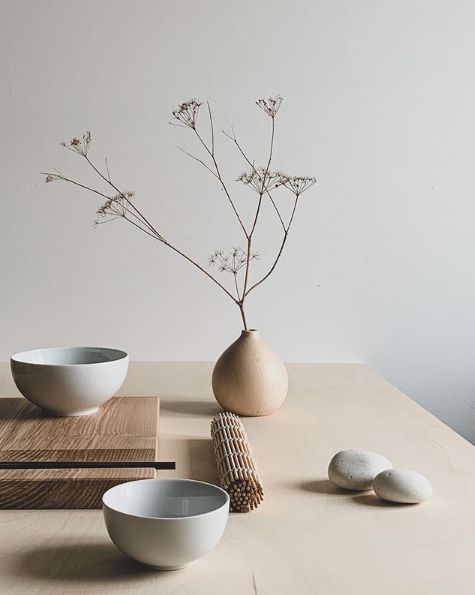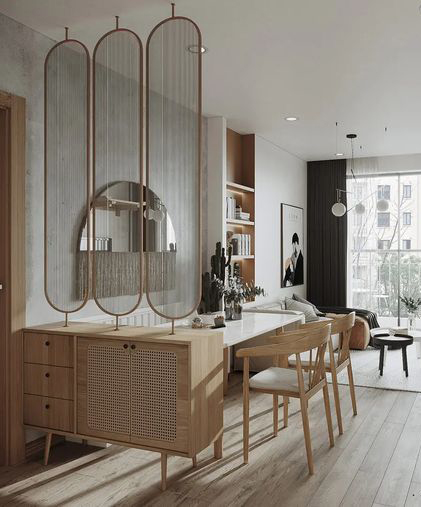Japandi: the style everyone's talking about
- mybettershelf
- Feb 2, 2023
- 4 min read
Mixing two styles is always exciting, but one could have never thought how such an experiment can result in one of the most popular interior design trends!
The combination of North-European and Japanese styles may sound strange at first, however, its result - japandi - is basically the most trending interior design style today. In this article, we get a deep dive into japandi style: listing the elements of this style and also showing some great examples of japandi interiors.
What is japandi style?
Japandi is an interior design style that has gotten really popular in the past few years. If you like browsing pinterest and interior design forums, you have probably come across this style.
The term japandi is the mix of two words: Japanese and Scandinavian. Interiors that feature both styles are usually called japandi interiors. Japandi is very likable, as it features several trends that are popular individually as well, such wabi sabi, organic decoration, brown and neutral tones - these trends are present not only in the japandi style but basically in the whole interior design scene.
To better understand japandi, first we need to take a look at Scandinavian and Japanese style separately.
Briefly about Scandinavian interior design
Since IKEA got its nation-wide presence, Scandinavian style reached a worldwide popularity across the 20th century - it is still one of the most common and easiest styles to use. Scandinavian style originates in Northern-Europe (Denmark, Sweden and Finland). It focuses on simplicity, cozy interiors and it avoids complicated designs.
Color-wise, a Scandinavian home features white and various light-tone colors, but may also show black accents, giving a nice contrast to the light colors. Wood is a preferred material in Scandinavian style which takes effect on the color palette as well: there are plenty of light wood color tones, such as birch, oak, etc.
What about furniture? Scandinavian style focuses on practical usage and coziness - a soft couch is almost obligatory in the living room, maybe with some fur decor and accessories (like rugs, chair blankets) - that is also one of the reasons the term “hygge” is related to the Scandinavian lifestyle.
The second most important function is storage. Scandinavian style focuses on satisfying our everyday needs, adding practical sense to storage options. This style helps you feel good in your home, day by day.
Briefly about Japanese style
Traditional Japanese style goes back to centuries - it focuses on simplicity and harmony. Japanese homes have only the essential furnishing (for sitting, dining and storage) and symbolic decoration (such as wabi sabi).
Japanese homes feature a neutral color palette, natural materials and natural light - the chance is very small that you find anything artificial or plastic in a Japanese room. There are no unnecessary objects either: Japanese designs prefer less decoration and promote removing distracting elements. In a Japanese home you can find only the essential and symbolic decoration that discreetly harmonizes with the whole atmosphere. “Less is more” is maybe the best expression that describes Japanese interiors.
There are typical Japanese items and furniture as well, for example the tatami mat or the shoji screen that is great for creating stray light and also for separating spaces. Japanese furniture usually has a low height - high beds and tables are not present in Japanese interiors. Continuing the list of typical elements, we can also mention the ikebana vase, wabi-sabi ceramics, kintsugi, bonsai, classic Japanese woodcut prints (think of Hokusai, for example), etc.
Key features of japandi interiors
As the japandi style is a mix of Japanese and Scandinavian styles, it includes the elements of both: it is minimal, practical and involves various Scandinavian and Japanese-inspired furniture and decor. Let’s see the features of japandi interior design one-by-one:
Colors
When you step into a japandi-inspired room, most likely you will see muted colors. There are no vivid colors in japandi interiors, as the style aims to create a tranquil atmosphere. Various shades of browns, whites, and some dark brown and black for a good contrast and accent. You may also find the colors of stone, bamboo or cane and other natural materials.
Decoration
Following the “less is more” philosophy, japandi interiors show only the essential decorations. It can be tiny or huge, it does not matter - the meaning is more important. You won’t find ornate, gaudy detailing either in japanese interiors or on japandi furniture. It is important to keep a tidy look without overwhelming the look with too much decoration.
Furniture
Japandi furniture are basically japanese-inspired classic Scandinavian pieces - quoting from a blog: "Japandi blends the smooth, modern lines of Scandinavian design with the sleek, functional, elegance of the Japanese aesthetic. It is minimalist yet welcoming, and is all about using neutral tones, lots of textures and natural materials."
Japandi furniture is usually made of wood, sometimes with rattan, and often featuring the trending fluted or reeded wooden surfaces that add further elegance and moderate decoration to these pieces. It is also common in japandi furniture that they are usually lower than classic pieces - low coffee tables, beds and stools add to the typical look of japandi.
Materials
Japandi is for those who like natural or organic materials. Wood, stone, paper are classic materials that you can select for creating a perfect japandi space. Plants are welcome, too, giving real living material to the space.
Arrangement
Japandi interiors show practical minimalism - light has to be able to flow through it, it should be spacious and absolutely not overcrowded. The essential furniture (such as bed, sofa, storage) sets the main outline of the arrangement. Multi-purpose spaces are also typical in japandi interiors (resting and working areas blend into each other, for example).
Do you like the japandi style? Get even more inspiration from our Japandi Pinterest board
Japandi is a relatively new style, based on classic styles. If you’d like to learn more about the basic interior styles, we recommend our recent article: Interior design styles: the basics.







































